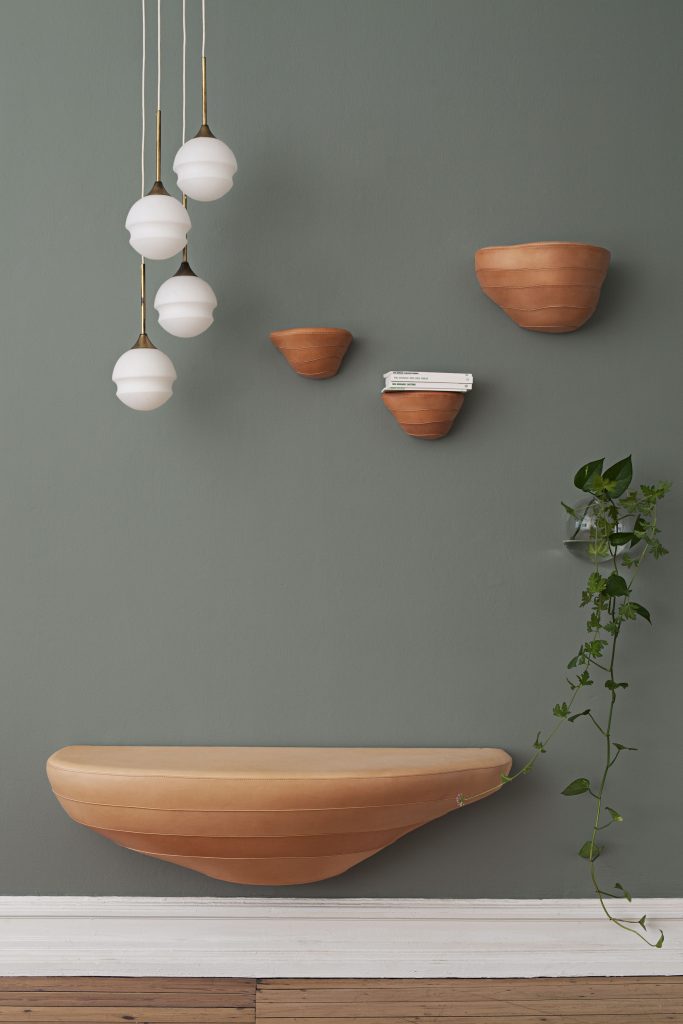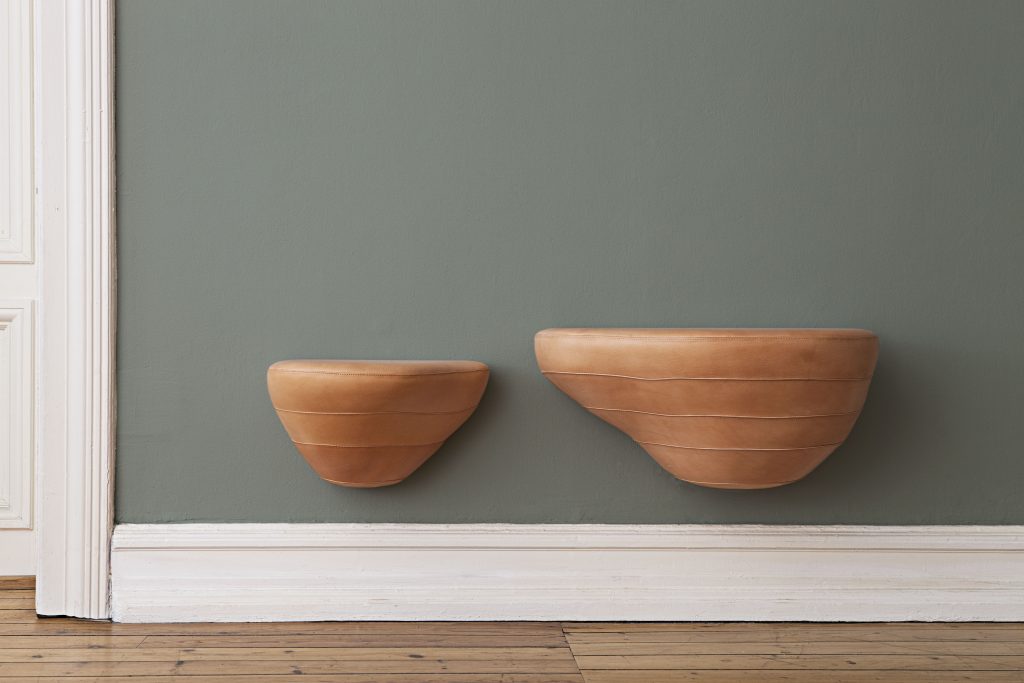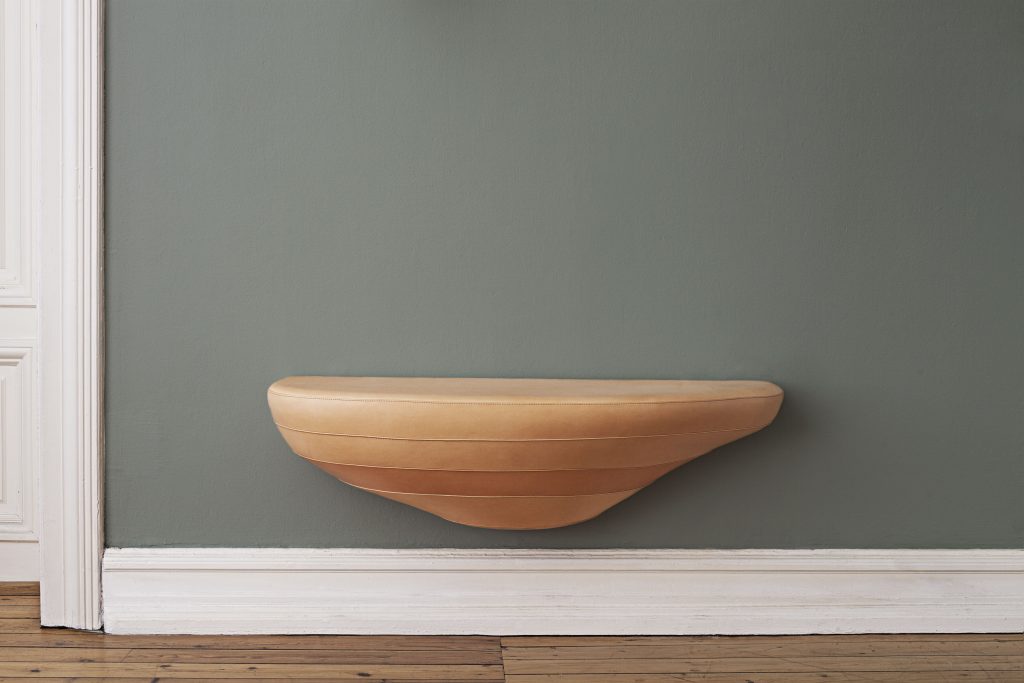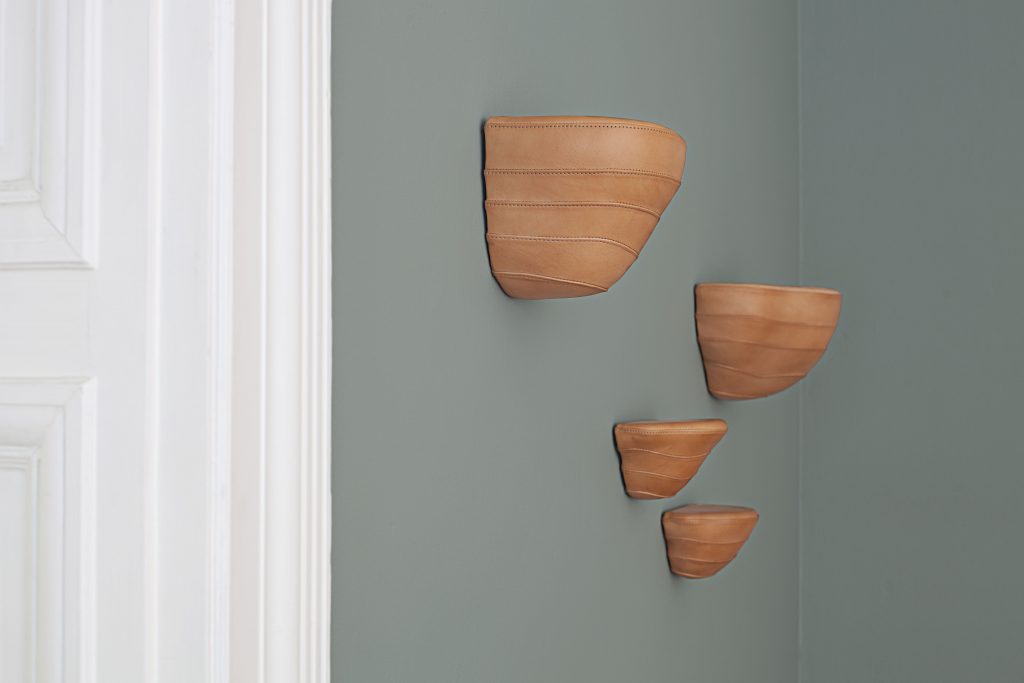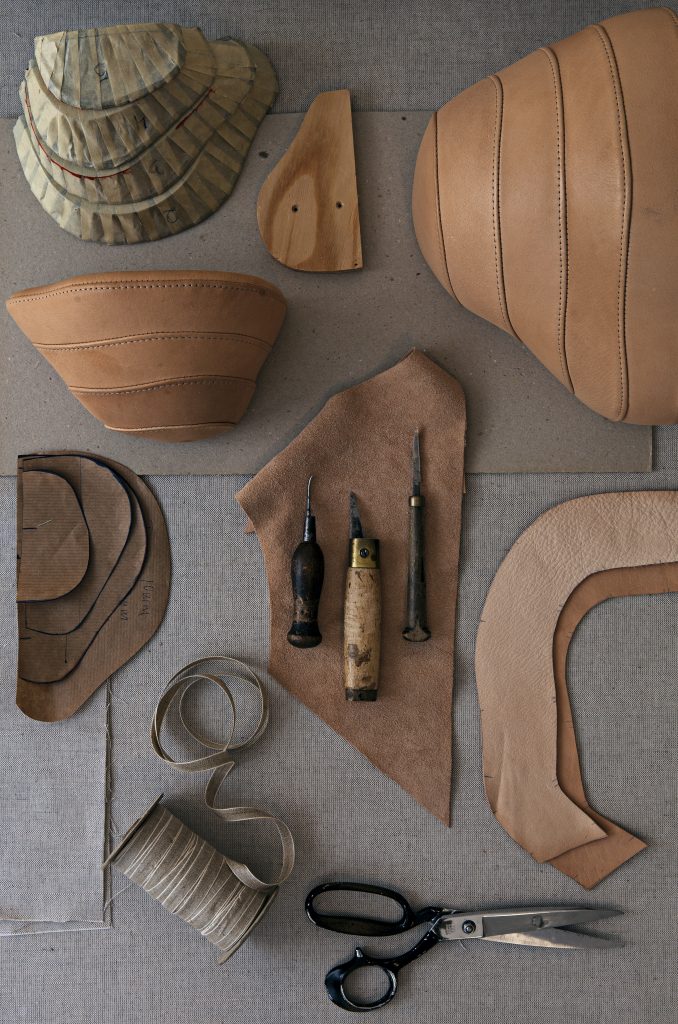Ticka project
What is a piece of furniture? A table, a chair, a shelf?
It is easy to think first of various structures – of table tops, seats and shelves held up by bases, rails and legs. But the most original types of furniture – which we still use in nature – are organic, growing forms. A stone, a rock surface or a tree trunk all function excellently to provide support and act as a seat. Or even to be laid as a picnic table.
“Ticka” is this kind of furniture: organically shaped shelves and seats inspired by the forest fungus called polypore (“ticka” in Swedish). Also called bracket fungus, this fungus is often found growing on trees but also sometimes on the ground. Many species have been very important to humans over the centuries, such as Fomes fomentarius (tinder fungus or hoof fungus), which checks bleeding and Phellinus igniarius (willow bracket or fire sponge), which was prized as kindling for fires.
“Ticka” is created from leftover pieces of leather. This material was carefully selected for environmental and aesthetic reasons. In today’s leather processing industry, considerable amounts of the tanned leather are normally rejected. The demands for perfection are so high that the smallest stain or irregularity is enough to send the finished leather to the scrap heap. But this scarred leather with its visible marks is precisely what is used for “Ticka”. “The scarred feeling gives the pieces more character and life.”
“Ticka project” – a collaboration that challenges the meeting of craft and design.
The shelves were developed as a collaboration between Louise Hederström and upholsterer Carina Grefmar as part of the project Den Nya Kartan. Also as a touring exhibition during 2015 and 2016 at Form Design Center in Malmö, the Nationalmuseum in Stockholm and Vandalorum in Värnamo. The work with Ticka seats has been made possible with funding from the Swedish Arts Grants Committee. Grefmar+Hederströms Ticka project is represented by Hostler Burrows, New York.
